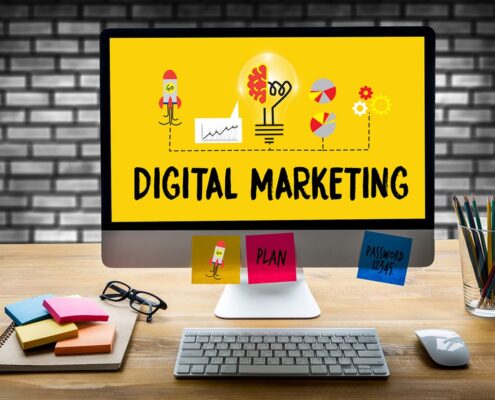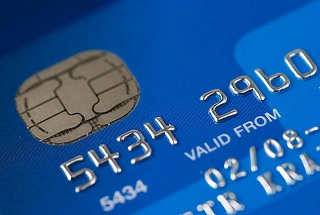Posts

Luis Miguel Romero Rodríguez: “AI is an opportunity to innovate in evaluation”
Romero-Rodriguez argues that the impact of AI cannot be ignored, as he argues that when the teaching-learning process and its evaluation are properly planned, AI can represent a great support.

Luis Miguel Romero: The Dilemma of Influencers and Brand Ambassadors
Influencers and brand ambassadors have become a very popular marketing tool in recent years. However, their improper use can lead to a number of risks, such as future reputation problems, inconsistent communication, and fraud.
Brands should be aware of these risks when choosing a digital prescriber. It is important that the influencer or brand ambassador is aligned with the brand's personality and that their target audience is appropriate. It is also important to ensure that there is no fraud on social media

Owned media, influencer marketing, and unofficial brand ambassadors: differences between narratives, types of prescribers, and effects on interactions on Instagram
In the current era of the attention economy, users find themselves in social networks over-saturated with advertising that tends not to catch the public’s attention or have great credibility. In this sense, brands are trying to get closer to their audiences by using non-invasive, user-generated storytelling strategies with a more natural and experience-focused message. This research aims to compare which narrative elements used by the official accounts of 5 Ibero-American nation brands on Instagram and by the users (UGC) of hashtags promoted from those official accounts generate greater organic interaction on that social network (likes and comments). With a correlational view, we seek to compare whether the promotion of countries generates greater interaction between those generated by owned media and by users (UGC). For this purpose, two analysis sheets were designed and validated to perform quantitative, descriptive, and correlational content analysis and were applied, on the one hand, to 5 official profiles of Ibero-American countries (Argentina, Ecuador, Mexico, Panama, and Venezuela) and on the other hand, using the hashtags promoted from these official accounts, the 100 posts of user-generated content (UGC) with greater relevance according to the platform were chosen. The main results show that Reels reach almost five times higher than any other type of posts in UGC accounts, while on the contrary, in corporate accounts, they are the types of content with the least interactions. Unlike what one might think, contests (giveaways) on official accounts generated fewer likes and social responsibility content, and posts featuring influencers and celebrities also failed to achieve significant interactions. Overall, official accounts generate the same amount of likes as UGC but significantly fewer comments. Brands only outperform UGC in likes in individual Photographs or Photo Rolls, while UCG outperforms brands in Reels for both metrics.

Corporate visual identity of financial institutions in Spain: iconographic-symbolic web content analysis
This research examines the visual identity of the 72 leading financial institutions operating in Spain through an ad hoc analysis model of iconographic-symbolic content. For this purpose, an analysis sheet is designed and validated, with theoretical variables where each sample object responds to categories grouped by similarity and under formal criteria obtained from the study of all the literature related to the fundamental graphic elements –iconic, linguistic, and plastic sign– and their application to the virtual world. The results show that legibility and modernity are priorities in the majority of the sample corpus, with a typographic style without finials, simple strokes, capital, round and medium-thickness characters. In addition, the entities prefer other values apart from professionalism and stability, such as closeness or trust, making use in the compositions of a quality range of 2-3 color combinations in which the balance between cold and warm colors is appreciable. For the sake of responsive web design, financial institutions are inclined to stay on the sidelines and not do without any elements in their visual identities, leading the way in the use of logotypes

Toward state-of-the-art on social marketing research in user-generated content (UGC) and influencers
This study examines the research that has been conducted on user-generated advertising content in the social marketing strategies of commercial brands to understand the phenomenon, explore academic interest in the topic and identify areas of limited thematic coverage. A systematic review of existing scientific literature in the Web of Science (WoS) and Scopus was carried out using the PRISMA protocol. A co-occurrence matrix was used to review emerging topics on user-generated content (UGC) and influencer marketing, allowing the identification of articles (n = 59) related to the objective of this research. Most research has analyzed UGC in images or text, but only very few have addressed videos and other digital formats (such as reels, image carousels or podcasts), although there is sufficient work focused on Twitter, Facebook and YouTube. There was no evidence of work exploring the effects, repercussions and possible dangers of uncontrolled brand exposure through Unofficial Brand Ambassadors. The literature review has allowed finding important areas of future research that the scientific community has not sufficiently addressed. Likewise, this work shows structurally several classifications of UGC, which will facilitate future research to deepen and broaden these categories.
